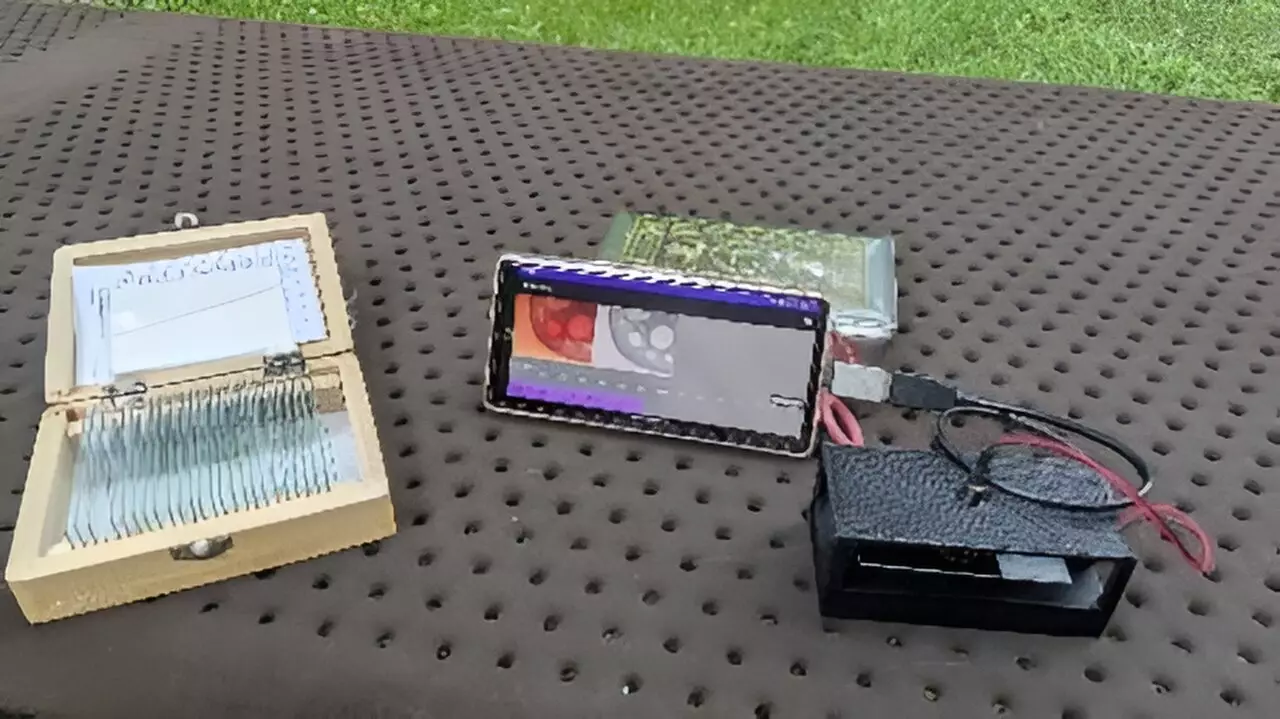The advent of technology has profoundly transformed various fields, and microscopy is no exception. Recent advancements have paved the way for a groundbreaking innovation: a smartphone-based digital holographic microscope. This device enables precise three-dimensional measurements and holds significant promise for educational and clinical applications, particularly in resource-limited settings. The ability to transport this lightweight and cost-effective microscope makes it an invaluable tool for expanding access to scientific research and diagnosis worldwide.
At its core, digital holography involves the intricate process of capturing interference patterns produced when light interacts with a sample. A reference beam of light combined with the scattered light from the object creates a hologram, which can be digitally reconstructed to reveal detailed 3D information about the sample. This functionality allows scientists to measure not only the surface but also the internal features of biological tissues or other materials. Prior to the innovation discussed, digital holographic microscopes were cumbersome, often requiring elaborate optical setups and substantial computing resources. Thus, the development of a smartphone-based model marks a significant step forward in making this technology more accessible and user-friendly.
The research team, led by Yuki Nagahama from the Tokyo University of Agriculture and Technology, has utilized innovative methods to overcome previous limitations associated with digital holography. By employing a straightforward optical system that can be fashioned using a 3D printer, combined with the computational capabilities of smartphones, this new microscope emerges as a practical solution for diverse settings. The strategic choice to leverage readily available smartphone technology not only reduces costs but also enhances portability, enabling users to conduct experiments in various environments and conditions.
One of the standout features of this new digital holographic microscope is its ability to perform real-time hologram reconstruction. Users can easily interact with the holographic images via touch gestures on their smartphones, allowing for intuitive zooming and adjustment of images. This immediacy in data processing distinguishes it from earlier technologies that either required separate computational devices or lacked the functionality for instantaneous reconstruction. The innovative approach adopted by the researchers—specifically using band-limited double-step Fresnel diffraction—enables efficient computation while minimizing data complexity. This advancement not only enhances the speed of the reconstruction process but also broadens the scope of what can be studied in practical scenarios.
Given its portable nature and ease of use, the potential applications of this smartphone-based holographic microscope are extensive. In educational contexts, it allows students to engage with biological samples firsthand, facilitating a richer understanding of complex concepts in life sciences. Additionally, in low-resource settings, the microscope could be invaluable for rapid diagnostics, such as identifying conditions like sickle cell disease, which may otherwise go unchecked due to a lack of resources. The ability to visualize samples directly in the field or classroom underscores the significance of this technology in expanding access to education and healthcare.
Looking ahead, the researchers plan to harness deep learning techniques to further enhance the quality of images generated by the smartphone-based microscope. As with many digital imaging systems, holographic reconstruction can sometimes result in unwanted artifacts that compromise the clarity of the images. Exploring machine learning algorithms could provide effective avenues for eliminating these secondary images, offering clearer, more accurate representations of the underlying structures. The incorporation of such advanced computational techniques promises to elevate the utility of the microscope across various applications, setting a foundation for future advancements in the field.
The development of a smartphone-based digital holographic microscope is a remarkable leap in the intersection of technology and microscopy. Its affordability, portability, and real-time functionality have the potential to democratize access to scientific tools across multiple sectors. As researchers continue to refine this innovative technology and explore new applications, we may witness a significant paradigm shift in how microscopy is approached, particularly in settings where traditional equipment is impractical or unavailable. Through ongoing research and development, the future of holographic microscopy looks promising, paving the way for increased access to precision measurement and analysis worldwide.


Leave a Reply